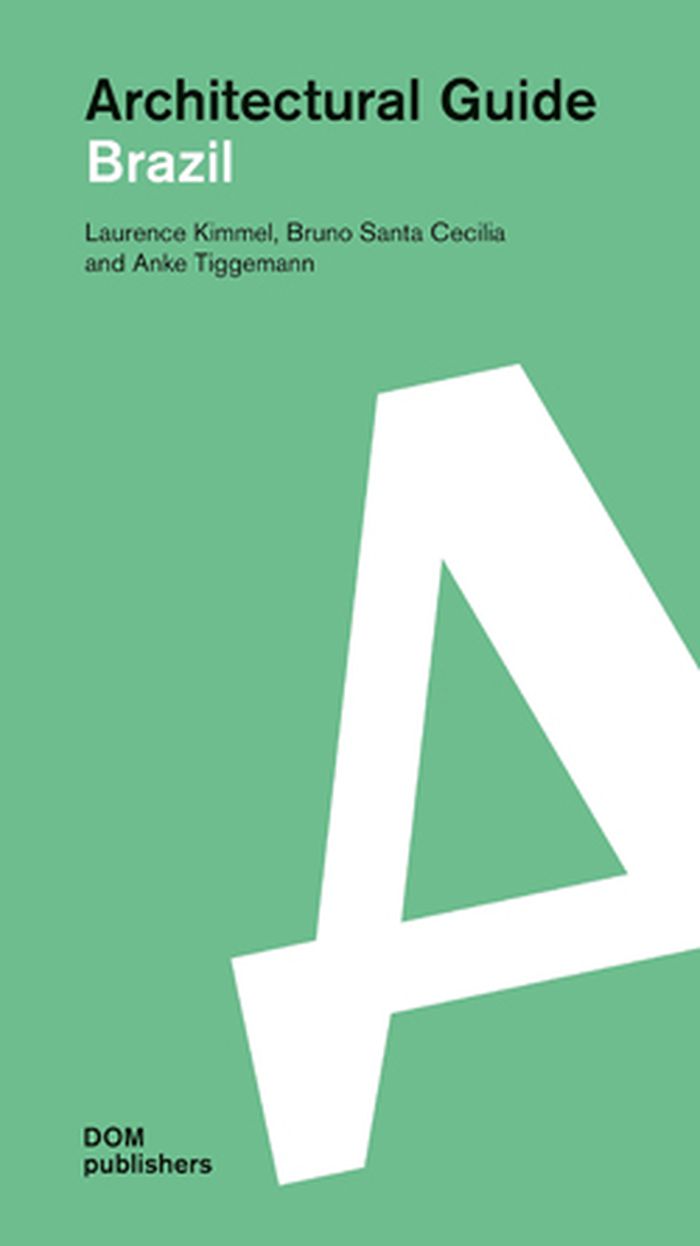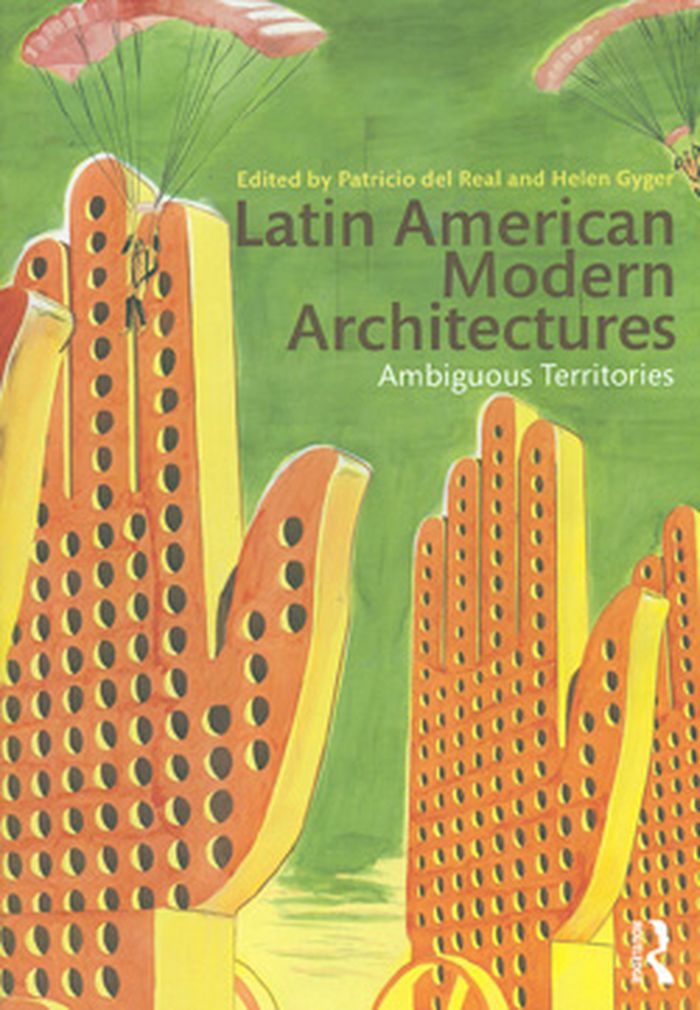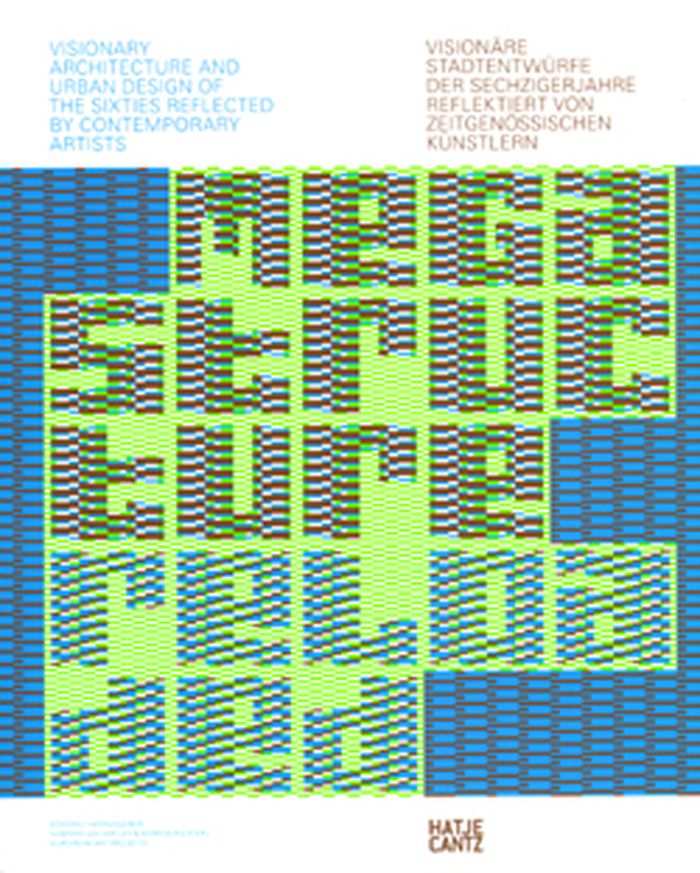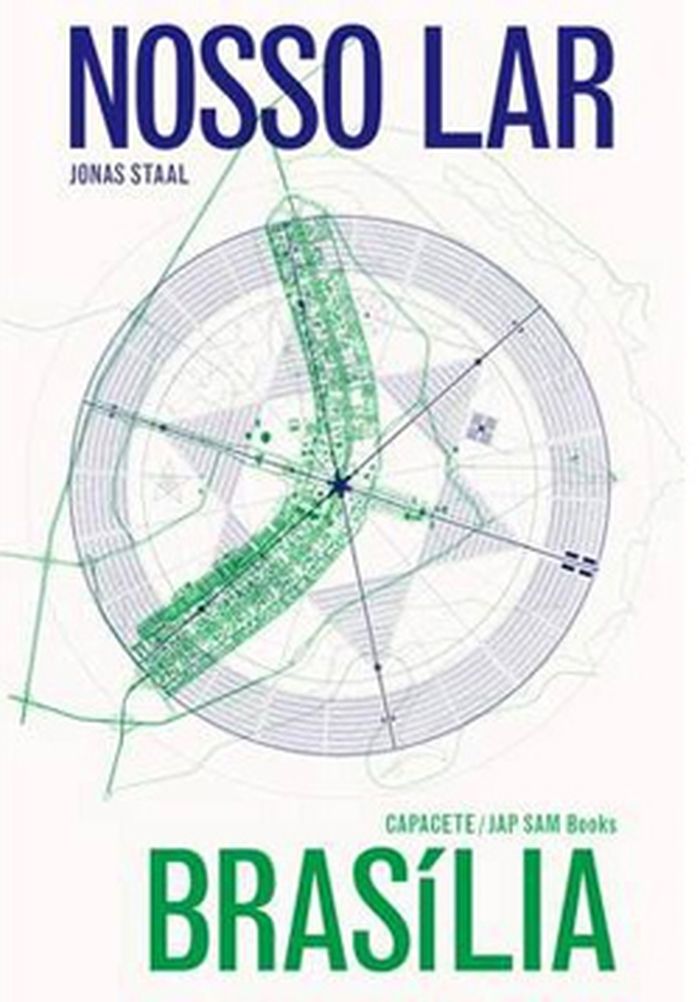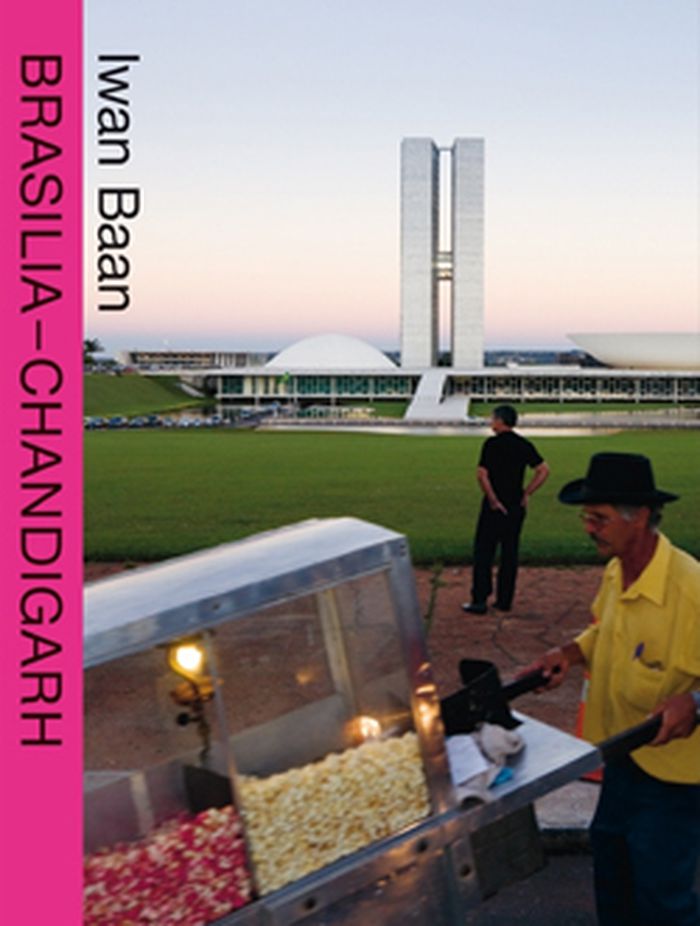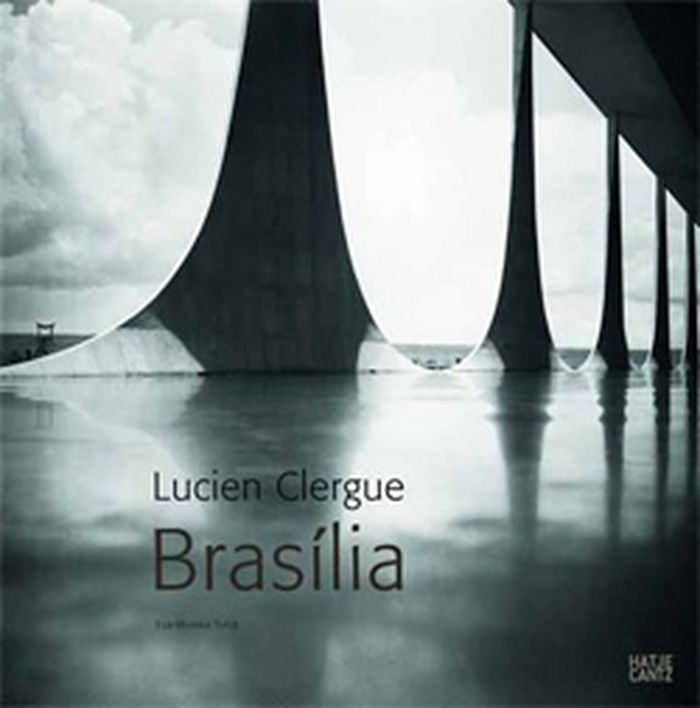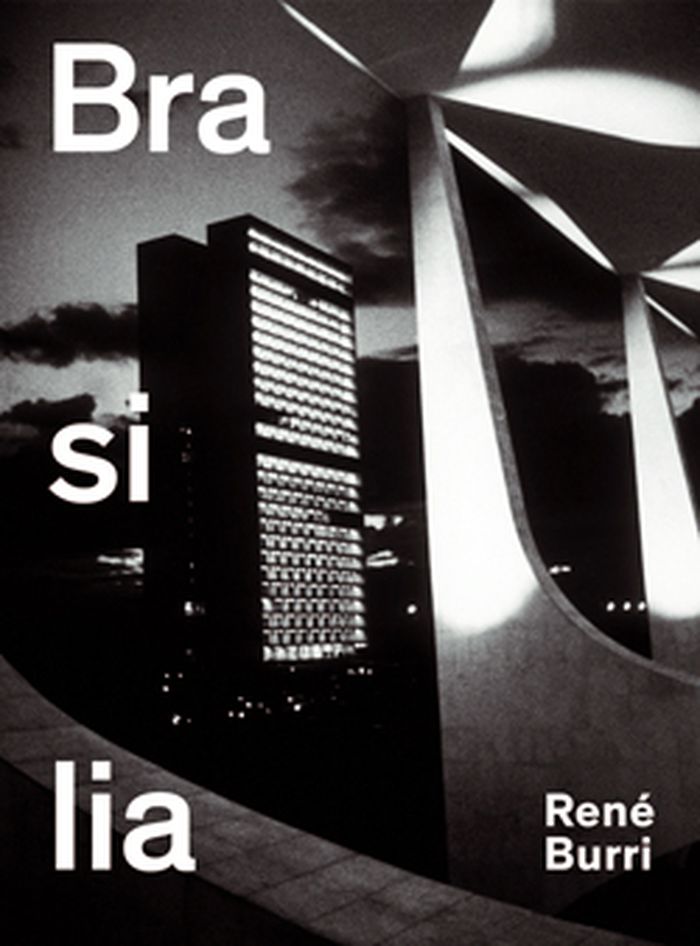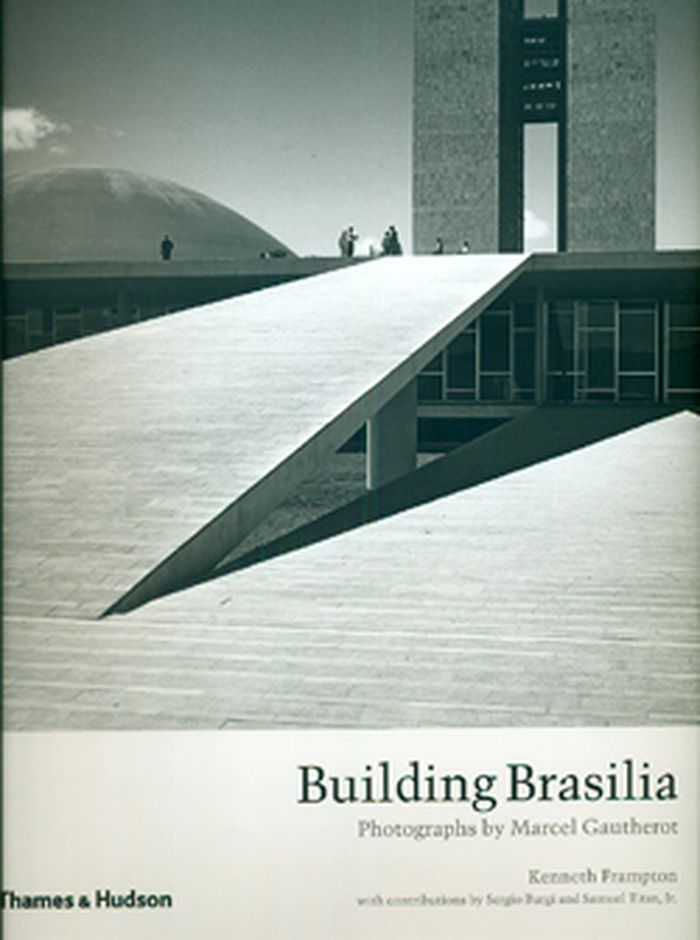Brazil architectural guide
$53.95
(disponible sur commande)
Résumé:
This publication provides a selection of 220 modern buildings — from the canonical works of Brazilian modern architecture to barely-known buildings; from works of the six best-known Brazilian masters — namely, Oscar Niemeyer, Lucio Costa, Paulo Mendes da Rocha, Joao Vilanova Artigas, Lina Bo Bardi, and Joao Filgueiras Lima (Lele) — to those of young aspiring architectural(...)
Brazil architectural guide
Actions:
Prix:
$53.95
(disponible sur commande)
Résumé:
This publication provides a selection of 220 modern buildings — from the canonical works of Brazilian modern architecture to barely-known buildings; from works of the six best-known Brazilian masters — namely, Oscar Niemeyer, Lucio Costa, Paulo Mendes da Rocha, Joao Vilanova Artigas, Lina Bo Bardi, and Joao Filgueiras Lima (Lele) — to those of young aspiring architectural offices. Coming from different cultural contexts and professional backgrounds, the three authors favoured an open-minded approach to Brazilian production. Considering the vastness of the country and the enormous number of projects, the selection presented here is far from exhaustive but presents a panoramic overview that helps the traveller to see good architecture.
Guides des villes
$97.50
(disponible en magasin)
Résumé:
Latin American Modern Architectures has thirteen new essays from a range of distinguished architectural historians to help you understand the region's rich and varied architecture. It will also introduce you to major projects that haven't been written about in English. A foreword by historian Kenneth Frampton sets the stage for essays on well-known architects, such as(...)
Latin American modern architectures: ambiguous territories
Actions:
Prix:
$97.50
(disponible en magasin)
Résumé:
Latin American Modern Architectures has thirteen new essays from a range of distinguished architectural historians to help you understand the region's rich and varied architecture. It will also introduce you to major projects that haven't been written about in English. A foreword by historian Kenneth Frampton sets the stage for essays on well-known architects, such as Luis Barragan and Felix Candela, which will show you unfamiliar aspects of their work, and for essays on the work of little-known architects, such as Lucio Costa and Joaquim Cardozo, which will spark your creativity. This book is a source for historical and critical essays on a sampling of Latin America's diverse architecture, providing much-needed information on key case studies.
Modernisme
$55.00
(disponible sur commande)
Résumé:
The key figures of this resurgence--a group of architects and artists including Jose Davila, Simon Dybbroe Møller, Ryan Gander, Erik Goengrich, Franka Hörnschemeyer, Victor Nieuwenhuijs & Maartje Seyferth, Tobias Putrih, Tomas Saraceno, Katrin Sigurdardottir and Tilman Wendland--are detailed in this volume through texts and images. Soviet peripheral cities are discussed(...)
Architecture expérimentale
novembre 2008, Ostfildern
Mega-structure reloaded: visionary architecture and urban planning of the 1960s reflected by contemporary artists
Actions:
Prix:
$55.00
(disponible sur commande)
Résumé:
The key figures of this resurgence--a group of architects and artists including Jose Davila, Simon Dybbroe Møller, Ryan Gander, Erik Goengrich, Franka Hörnschemeyer, Victor Nieuwenhuijs & Maartje Seyferth, Tobias Putrih, Tomas Saraceno, Katrin Sigurdardottir and Tilman Wendland--are detailed in this volume through texts and images. Soviet peripheral cities are discussed for their historical precedent and contextualized through ironic responses to them by radical architecture collectives such as Superstudio and Archizoom. The volume is rounded out with texts on Le Corbusier, Oscar Niemeyer, Lucio Costa and the planned cities of Chandigarh and Brasilia, as well as a theoretical section on megastructures and megacities. This volume is published in concert with an extensive European traveling exhibition and a series of symposia and workshops.
Architecture expérimentale
Nosso Lar: Brasilia
$31.00
(disponible sur commande)
Résumé:
Nosso Lar, Brasília explores the relationship between Spiritism and Modernism in Brazilian architecture. Central to the book is a systematic comparison between the spiritist city of Nosso Lar (1944), as described by the medium Chico Xavier; and the modernist city of Brasília (1956), the country's capital as designed by Lúcio Costa and Oscar Niemeyer.
Nosso Lar: Brasilia
Actions:
Prix:
$31.00
(disponible sur commande)
Résumé:
Nosso Lar, Brasília explores the relationship between Spiritism and Modernism in Brazilian architecture. Central to the book is a systematic comparison between the spiritist city of Nosso Lar (1944), as described by the medium Chico Xavier; and the modernist city of Brasília (1956), the country's capital as designed by Lúcio Costa and Oscar Niemeyer.
Théorie de l’architecture
$60.00
(disponible en magasin)
Résumé:
In 1960, Brasilia was celebrated as the realisation of an urban planning vision based on designs by Lucio Costa and Oscar Niemeyer. At the same time, the sectoral city of Chandigarh was rising according to plans by Le Corbusier. The test tube city arose as an export of modernity from a Western planning euphoria that displayed utopian traits. In both cities, foreign(...)
Brasilia Chandigarh: Living with Modernity
Actions:
Prix:
$60.00
(disponible en magasin)
Résumé:
In 1960, Brasilia was celebrated as the realisation of an urban planning vision based on designs by Lucio Costa and Oscar Niemeyer. At the same time, the sectoral city of Chandigarh was rising according to plans by Le Corbusier. The test tube city arose as an export of modernity from a Western planning euphoria that displayed utopian traits. In both cities, foreign architecture entered into a harmonious relationship with indigenous culture, forming new and independent identities. This publication addresses the question of how modernism has been appropriated in both cities, and how the people who live in them deal with it. Commonalities and differences are identified and images of everyday urban life showcased. On the initiative of the publisher, the young photographer Iwan Baan has taken stock of contemporary life in both cities.
Monographies photo
Lucien Clergue : Brasilia
$70.00
(disponible sur commande)
Résumé:
Brasília is the first presentation of Clergue's marvelous photographs of Brazil's capital, taken in 1962-63, just a few years after the city was built - a body of work until recently believed to be lost. Brasilia was developed in 1956, with Lúcio Costa as the principal urban planner, Oscar Niemeyer as the principal architect and Roberto Burle Marx as the landscape designer.
Lucien Clergue : Brasilia
Actions:
Prix:
$70.00
(disponible sur commande)
Résumé:
Brasília is the first presentation of Clergue's marvelous photographs of Brazil's capital, taken in 1962-63, just a few years after the city was built - a body of work until recently believed to be lost. Brasilia was developed in 1956, with Lúcio Costa as the principal urban planner, Oscar Niemeyer as the principal architect and Roberto Burle Marx as the landscape designer.
Monographies photo
livres
$5.95
(disponible sur commande)
Résumé:
In this first English-language edition of Oscar Niemeyer’s memoirs, the architect reveals how his many passions – among them his large family, many friends, the sensuous landscape of Brazil, women, communism, art and literature – have influenced his life and in turn inspired his architecture. Born in Rio de Janeiro, Niemeyer graduated from the National School of Fine Arts(...)
The curves of time : the memoirs of Oscar Niemeyer
Actions:
Prix:
$5.95
(disponible sur commande)
Résumé:
In this first English-language edition of Oscar Niemeyer’s memoirs, the architect reveals how his many passions – among them his large family, many friends, the sensuous landscape of Brazil, women, communism, art and literature – have influenced his life and in turn inspired his architecture. Born in Rio de Janeiro, Niemeyer graduated from the National School of Fine Arts in 1934. As a student he worked in the office of Lucio Costa, and on graduation he began collaborating with Le Corbusier on a new Ministry of Education and Health Building in Rio. Yet in contrast to the International Style, Niemeyer’s curvilinear forms reflected Brazil’s lush, undulating landscape and the emotive style of its music and dance. Here Niemeyer recounts his life in an informal, fluid narrative that moves from his childhood in Rio to friendships with intellectuals and politicians such as Jean-Paul Sartre and Fidel Castro, to tales of adventurous road trips. The book includes forty sketches by Niemeyer executed specially for these memoirs, a chronology of his life and career, notes and an index.
livres
octobre 2000, London
livres soldés
livres
$49.95
(disponible sur commande)
Résumé:
This landmark collection of illustrated essays explores the vastly under-appreciated history of America's other cities — the great metropolises found south of our borders in Central and South America. Buenos Aires, Sao Paulo, Mexico City, Caracas, Havana, Santiago, Rio, Tijuana, and Quito are just some of the subjects of this diverse collection. How have desires to(...)
Cruelty & utopia : cities and landscapes of Latin America
Actions:
Prix:
$49.95
(disponible sur commande)
Résumé:
This landmark collection of illustrated essays explores the vastly under-appreciated history of America's other cities — the great metropolises found south of our borders in Central and South America. Buenos Aires, Sao Paulo, Mexico City, Caracas, Havana, Santiago, Rio, Tijuana, and Quito are just some of the subjects of this diverse collection. How have desires to create modern societies shaped these cities, leading to both architectural masterworks (by the likes of Luis Barragan, Juan O'Gorman, Lucio Costa, Roberto Burle Marx, Carlos Raul Villanueva, and Lina Bo Bardi) and the most shocking favelas? How have they grappled with concepts of national identity, their colonial history, and the continued demands of a globalized economy? Lavishly illustrated, "Cruelty and Utopia" features the work of such leading scholars as Carlos Fuentes, Edward Burian, Lauro Cavalcanti, Fernando Oayrzun, Roberto Segre, and Eduardo Subirats, along with artwork ranging from colonial paintings to stills from Chantal Akerman's film "From the Other Side". Also included is a revised translation of Spanish King Philip II's influential planning treatise of 1573, the "Laws of the Indies," which did so much to define the form of the Latin American city.
livres
janvier 2005, New York
Arch Moyen-Orient
$109.95
(disponible sur commande)
Résumé:
2010 marked the 50th anniversary of Brazil's capital Brasilia. Architects Lucio Costa and Oscar Niemeyer designed what has become one of the most studied urban planning project. Niemeyer's Cathedral, his building for the National Congress and the city's 707-ft television tower are icons of modern architecture. The entire city, marked by its cross-shaped layout and vast(...)
René Burri, Brasilia: photographs 1960-1993
Actions:
Prix:
$109.95
(disponible sur commande)
Résumé:
2010 marked the 50th anniversary of Brazil's capital Brasilia. Architects Lucio Costa and Oscar Niemeyer designed what has become one of the most studied urban planning project. Niemeyer's Cathedral, his building for the National Congress and the city's 707-ft television tower are icons of modern architecture. The entire city, marked by its cross-shaped layout and vast open spaces, was named a UNESCO World Heritage site in 1987. The author of this publication visited Brasilia's vast building sites for the first time in 1958. He returned many times over the years, documenting with his camera growth and further development of this built Utopia. Besides documenting the buildings in various stages of completion, Burri took portraits of Niemeyer and his workers and photographed Brasilia's street scenes and people and aerial views of the city's first slums. His images capture the strong sense of a new era and a vibrant atmosphere of hard work and strain; they reflect the huge dimensions of the landscape and the great scale of this project and its ambition to design and build a new capital. This book presents a large selection from hundreds of colour and black-and-white photographs, the majority of them published in this book for the first time.
Monographies photo
Building Brasilia
$82.00
(disponible sur commande)
Résumé:
‘From nothing; from nothing to construction.’ Thus Marcel Gautherot, the ideal architectural photographer, recalled his epic undertaking in the late 1950s – photographing every step of the construction of the city of Brasilia, from untouched grassland to modern capital. Gautherot had studied architecture and design, and was influenced by Le Corbusier and other(...)
Building Brasilia
Actions:
Prix:
$82.00
(disponible sur commande)
Résumé:
‘From nothing; from nothing to construction.’ Thus Marcel Gautherot, the ideal architectural photographer, recalled his epic undertaking in the late 1950s – photographing every step of the construction of the city of Brasilia, from untouched grassland to modern capital. Gautherot had studied architecture and design, and was influenced by Le Corbusier and other modernist architects as well as the political radicalism of the interwar period. Postwar, however, he devoted his life to travel and photography, taking with him the formal rigour of modernism but also a sympathy for ordinary people that was to help him in his work. After moving to Brazil in 1940, he forged many friendships and partnerships, most notably with Oscar Niemeyer, the chief architect of Brasilia. Indeed, Gautherot recorded most of Niemeyer’s work as his photographer of choice. It was, however, in Brasilia – the high point of the careers of both Niemeyer and chief urban planner Lucio Costa – that the photographer’s art of light and shadow reached its zenith. Gautherot repeatedly visited Brasilia, photographing not only every stage of construction, but also the faces and homes of the workers who worked on the construction sites and satellite cities in the making. The result is a monumental photo essay on this triumph of urban planning and architecture. Here, for the first time, the photographs are collected to form a portfolio of Gautherot’s work in Brasilia, and it pays due tribute to this great Franco-Brazilian artist in the centenary of his birth and on the fiftieth anniversary of Brasilia’s inauguration.
Monographies photo
